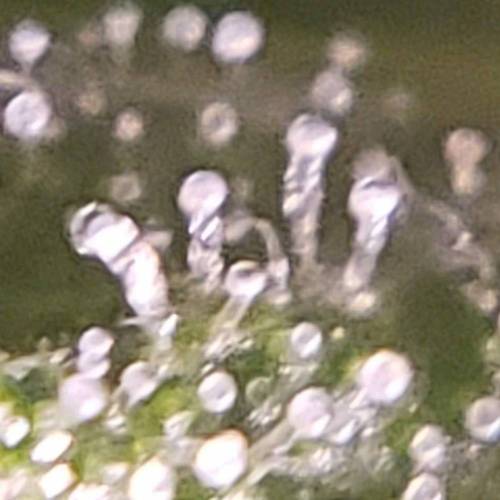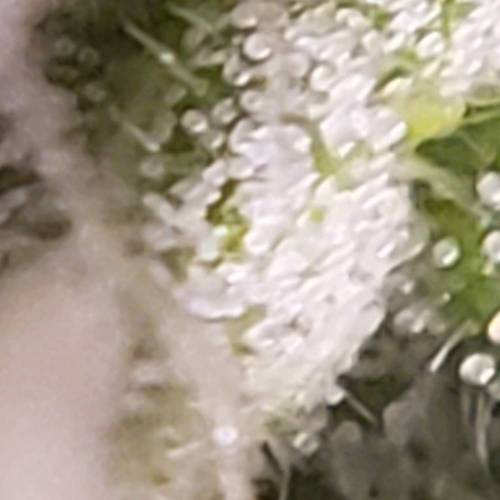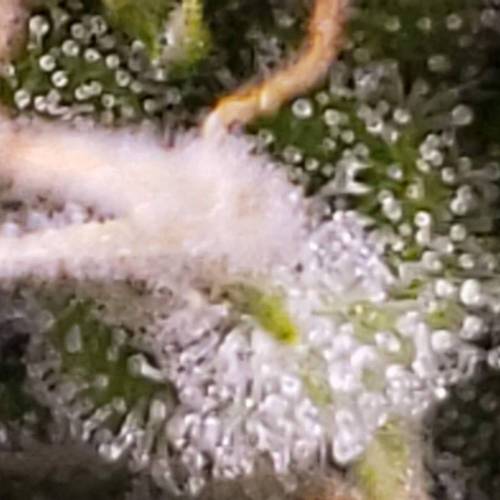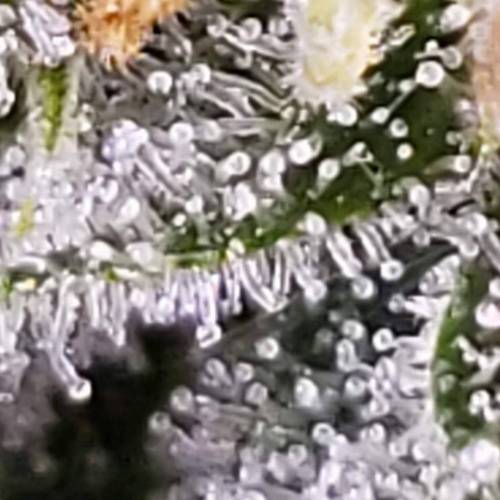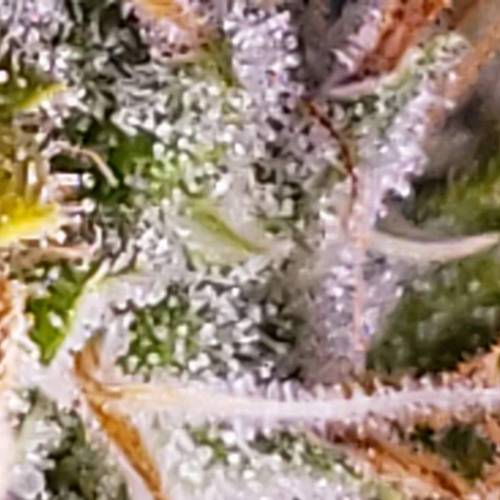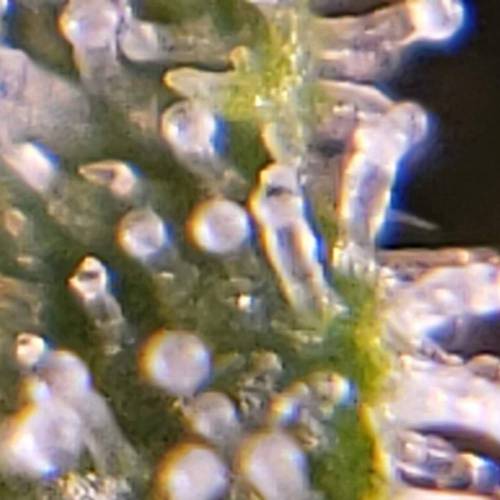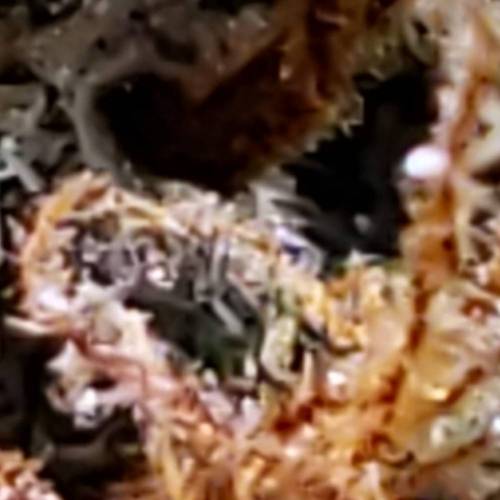The Grow Awards 2026 🏆 
























First Grow, OG Kush Auto

VEG
Whosled Light Emitting Diodes/200W
Whosled

FLO
Whosled Light Emitting Diodes/200W
Whosled

Tent
Homemade
Homemade
Soil
Custom
Indoor
Room Type
Topping
weeks 4
LST
weeks 5
26 liters
Pot Size
Start at Harvest
1
Week 1. Vegetation5y ago
2.54 cm
Height
18 hrs
Light Schedule
25 °C
Day Air Temp
No Smell
Smell
49 %
Air Humidity
21 °C
Night Air Temp
26.5 liters
Pot Size
0.42 liters
Watering Volume
Nutrients 2

Big Bloom
3.906 mll

Grow Big
1.302 mll
Jerry101 This was the second attempt to germinate an OG Kush Auto seed. The first seed did not germinate. Seed was soaked for 24 hours in water then put under wet paper towel for 2 days. Germinated seed was planted in soaked rapid rooter and placed in seedling tray with lid. 15000 LUX Full Spectrum LED Grow Light right above cover once sprouted. Ready to transplant after 8 days from seed. Mixed 50/50 Miracle Grow potting soil and Miracle Grow Garden Soil in 7 gallon grow bags. Added Summit Responsible Solutions Mosquito Bits into the top 3 inches of the grow bag soil to control any gnats and other insects that may infest below ground
Transplanted OG Kush seedling into 7 gallon grow bag. Watered around plant with 24 oz distilled water. Set drippers 1" from plant. Drippers on 30 seconds every 5 hours cycle. Using only blue lights (veg) at 34 inches from soil for 18 hours a day.
One cotyledon leaf is bent over the center of seedling but does not appear to be affecting growth. Overall, the seedling looks healthy after the first week.
1 like
comments
Share
2
Week 2. Vegetation5y ago
2.54 cm
Height
18 hrs
Light Schedule
27 °C
Day Air Temp
6.1
pH
No Smell
Smell
65 PPM
TDS
49 %
Air Humidity
23 °C
Solution Temp
23 °C
Night Air Temp
26.5 liters
Pot Size
0.34 liters
Watering Volume
76.2 cm
Lamp Distance
Jerry101 Dehumidifier tank was full. 1200w grow light was switched to full spectrum. Moved 2 smaller 100w Full Spectrum LED Grow Lights about 4 inches from plant on each side. Emptied dehumidifier tank no nutrients to be added until tank fills. Soil should still have enough nutrients. Soil moisture is still high. Increased dripper interval to 6 hours. Misted plant twice per day.
Saw good growth this week. Looks like it's coming out of the seedling stage.
1 like
comments
Share
3
Week 3. Vegetation5y ago
5.08 cm
Height
18 hrs
Light Schedule
27 °C
Day Air Temp
6.2
pH
No Smell
Smell
250 PPM
TDS
49 %
Air Humidity
23 °C
Solution Temp
23 °C
Night Air Temp
26.5 liters
Pot Size
0.3 liters
Watering Volume
71.12 cm
Lamp Distance
Nutrients 2

Big Bloom
2.604 mll

Grow Big
2.604 mll
Jerry101 Went back to adding a light amount of nutrients this week. Two tsp of Fox Farms Big Bloom and 2 tsp of Fox Farms Grow Big. Nutrients were added to a full dehumidifier reservoir and expected to last the week of watering from the drippers (about 2 gallons per week for 3 plants being watered). Soil moisture is still a little high. Increased dripper interval from 6 hours to 7 hours. Soil moisture was pretty much perfect by the end of the week. Temps in the grow room are remaining consistent at 72 deg F. lights off and 78 degrees when lights are on. Humidity got away from me (65%) when lights were off (cooler temps). Was letting the dehumidifier fill and shut off because the nutrients were in the dehumidifier reservoir. The dehumidifier is currently pulling more water from the air than 3 plants need. Began removing about 1/4 of the water from the dehumidifier reservoir every day and humidity came back under control in the 45% range with lights on and 50% range when lights off. Will need a scheme for adding nutrients to the tank reservoir while still removing water every day. Still using 2 100w (22w each actual) full spectrum LED on two sides as well as the 1200w LED full spectrum from the top.
Plant is still short, but really starting to add foliage at the beginning of the week. Taking on a deep green in the leaves. I'm not seeing anything that has me worried.
1 like
1 comment
Share
4
Week 4. Vegetation5y ago
7.62 cm
Height
18 hrs
Light Schedule
26 °C
Day Air Temp
6.1
pH
Weak
Smell
252 PPM
TDS
50 %
Air Humidity
22 °C
Solution Temp
23 °C
Substrate Temp
22 °C
Night Air Temp
26.5 liters
Pot Size
0.3 liters
Watering Volume
68.58 cm
Lamp Distance
Nutrients 2

Big Bloom
2.604 mll

Grow Big
2.604 mll
Jerry101 Soil moisture has come in perfect over last week. Will be keeping a closer eye on the dehumidifier this week not letting the reservoir fill up. Target humidity in the grow room is between 47% and 52%. this week. I rotated the plant 90 deg. clock wise to ensure even light. Still have two 100w full spectrum gooseneck grow lights on either side of the plant as well as the 1200w above. Now that the plant is growing healthy I misted with Sevin Insect Killer. The plan is light misting once a week for a couple weeks until flowering. There are no signs of insects on the plants. It is preventative.
Odor control is becoming an issue because the plants are maturing and the grow room is open on top. There is a three stage HEPA air purifier in the grow room (rated to 200 sq ft) that has activated charcoal in stage 2, but that will not be enough. I ran an ozone generator for 30 minutes outside the grow room and it took care of the problem so far. I'm not worried so much about the ozone generator because it is in an unfinished basement where no people or pets go and it is not being run in the grow room itself. My plan is to run the ozone generator once per week or if the odor becomes overpowering. I also placed some Ona Gel Pro in a coffee can with holes punched in the lid outside the grow room. I also hung one Earth Care Janitorial and Industrial Odor remover in the grow room. With only 3 plants in the grow room and the basement being somewhat isolated from the rest of the house I don't anticipate odors to be a problem in the living areas. We will see.
Overall, the OG Kush is really coming on strong. It is definitely out of the seedling stage. It is 11 days behind the other two plants in the grow room, but looks healthy. All the leaves are a deep green. There is no evidence of disease, bugs, or stress. The leaves are really wide on this plant and they are coming in very dense. I assume it has something to do with the strain. Topped the plant this week. Probably won't start LST on this plant until next week. Topping didn't seem to phase it at all.
1 like
comments
Share
Used techniques
Topping
Technique
5
Week 5. Vegetation5y ago
17.78 cm
Height
18 hrs
Light Schedule
28 °C
Day Air Temp
6.3
pH
Weak
Smell
272 PPM
TDS
51 %
Air Humidity
22 °C
Solution Temp
23 °C
Substrate Temp
23 °C
Night Air Temp
26.5 liters
Pot Size
0.38 liters
Watering Volume
58.42 cm
Lamp Distance
Nutrients 3

Big Bloom
1.302 mll

Grow Big
1.302 mll

Tiger Bloom
1.302 mll
Jerry101 Soil was about right at the start of the week. However, the two other plants hooked up to the dripper were dry. Reduced watering frequency from 30 seconds every 7 hours to 30 seconds every 6 hours. Added small amount of nutrients to water. Started using Tiger Bloom (just 1 tsp per gallon). I don't expect this one to be in flower until next week, but the other two hooked to the dripper are. The soil moisture content was running a little low by the end of the week. Placed a bigger air purifier in the grow room. This one is rated for 840 sq ft. Should be plenty for a 24 sq ft room. Ran ozone generator for 10 minutes (20 feet away from grow room) at beginning of week. Added more Ona Gel to the coffee can outside the grow room. Spray a few spritzes of Fresh Wave outside the grow room. There is a faint smell in the basement where the grow room is located. at the beginning of the week. No smell at all through the rest of the house. There was virtually no smell in the basement where the grow room is located by the end of the week. Plant was turned 90 degrees clockwise at the beginning of the week to ensure even lighting. Use LST on the main stem... just a slight amount to even the canopy. Plant was lightly misted with Sevin bug killer at the beginning of the week as a preventive measure. Removed all LST wires on the plant at end of week. Plant is adequately trained. No other grow techniques are planned for this plant.
This plant continues to look good. Getting bushier. It doubled in height last week. It has a very even canopy with multiple bud sites by the end of the week. Next week will be the first full week of flowering.
2 likes
1 comment
Share
Used techniques
LST
Technique
6
Week 6. Flowering5y ago
26.67 cm
Height
18 hrs
Light Schedule
27 °C
Day Air Temp
6.5
pH
Weak
Smell
557 PPM
TDS
49 %
Air Humidity
21 °C
Solution Temp
23 °C
Substrate Temp
22 °C
Night Air Temp
26.5 liters
Pot Size
0.57 liters
Watering Volume
60.96 cm
Lamp Distance
Nutrients 3

Big Bloom
1.302 mll

Grow Big
0.651 mll

Tiger Bloom
1.302 mll
Jerry101 Raised grow lights from 30" to 34" above soil. Soil moisture was low by the end of last week. Reduced dripper interval from 30 seconds every 6 hours to 30 seconds every 5 hours. Checked dripper and it is still pumping fine. Rotated the plant 90 degrees clockwise. Added more Ona Gel to the coffee can outside the grow room. Ran Ozone generator for 15 minutes 20 feet away from the grow room. Smell in grow area is still only faint with all the odor control techniques being used.
This plant looks really good. This is the first full week of flowering. Soil was a little dry by mid week. Added 12 oz of nutrient water on top of water coming from the dripper. Plant still looks very good.
By the end of the week a total of 36 oz of water was added on top of what comes out of the dripper. Moved feed to dripper into a bucket instead of dehumidifier reservoir to better control nutrients. Plant looks good. No issues. Trichomes are clear. All pistils are still white. Probably 3 weeks from harvest.
1 like
comments
Share
7
Week 7. Flowering5y ago
30.48 cm
Height
18 hrs
Light Schedule
25 °C
Day Air Temp
6.0
pH
Weak
Smell
307 PPM
TDS
45 %
Air Humidity
21 °C
Solution Temp
22 °C
Substrate Temp
22 °C
Night Air Temp
26.5 liters
Pot Size
0.79 liters
Watering Volume
60.96 cm
Lamp Distance
Nutrients 3

Big Bloom
2.604 mll

Grow Big
1.302 mll

Tiger Bloom
1.302 mll
Jerry101 Plant has been a little thirsty. Decreased dripper frequency from 30 seconds every 5 hours to 30 seconds every 4 hours. Rotated the pot 90 degrees clockwise to ensure even lighting. Flowers are still fairly immature but they are filling out. It looks to be at least 4 weeks out until harvest. Overall, this plant looks very good.
Mid week update: This plant has become very thirsty. Soil moisture was running low early in the week. Added 62 oz of water in 2 days on top of what the dripper is delivering. There is no sign of distress. The buds are filling out, but still very immature. Pistils are still white. This plant doesn't appear to have a main cola. All flowers are growing in at about the same rate. I think the topping and LST back on weeks 4 & 5 worked.
3 likes
comments
Share
8
Week 8. Flowering5y ago
30.48 cm
Height
18 hrs
Light Schedule
27 °C
Day Air Temp
6.1
pH
Weak
Smell
18 PPM
TDS
60 %
Air Humidity
23 °C
Solution Temp
23 °C
Substrate Temp
22 °C
Night Air Temp
26.5 liters
Pot Size
0.79 liters
Watering Volume
60.96 cm
Lamp Distance
Jerry101 I didn't get to this until midweek. Humidity was higher than I like and Soil moisture was low. Rotated this plant 90 degrees clockwise to ensure even light. Added 48 oz of water on top of what the drippers are delivering. Drippers were also moved 90 degrees to ensure even soil moisture. Humidity was lowered to 45%. There were a few yellowing leaves removed from the bottom of the plant.
The tips of some of the fan leaves are turning brown with some curling. Water pH is good, soil pH should be good so I'm assuming the nutrients may be a little much. Began with pH'ed water only in the dripper. Will be adding water only with no nutrients for the rest of the week. Plant is still very bushy with many green fan leaves. Pistils are all still white and the trichomes are clear. This plant still has three or four weeks until harvest.
By the end of the week the buds are clearly still immature. The pistils are still mostly white, but about 80% of the trichomes are milky. The buds are not filled out. This plant still has about 3 weeks before harvest. Will watch trichomes closely.
2 likes
comments
Share
9
Week 9. Flowering5y ago
33.02 cm
Height
12 hrs
Light Schedule
24 °C
Day Air Temp
6.2
pH
Normal
Smell
15 PPM
TDS
45 %
Air Humidity
20 °C
Solution Temp
22 °C
Substrate Temp
22 °C
Night Air Temp
26.5 liters
Pot Size
0.53 liters
Watering Volume
35.56 cm
Lamp Distance
Jerry101 Plant was showing signs of nutrient burn on the leaf tips. Discontinued nutrients. Adding 6.2 pH water only through the dripper. I will most likely not add any more nutrients for the duration. There has been little height growth so I assume the plant is in full flower now. I switched the overhead lights to red only. Still using two full spectrum gooseneck lamps as well. The overhead lights were lowered. Overall, I want the plants to receive plenty of light, but I also want the temperature in the 75 degree range with lights on. The light schedule was switched to 12 hours. Turning off the blue light has brought the temps in the grow room down from about 80 degrees to about 75 degrees. Humidity in the room was brought down to 45% until harvest. Even though this is an auto-flower, the goal is to get the best conditions for the buds to fatten up now.
Just like at the beginning of every week, the plant was rotated 90 degrees clockwise to ensure even light on the plant. The plant is looking good. the buds are still immature and the pistils are still mostly white. The trichomes are turning milky. I think there is still three more weeks until harvest.
By mid week soil was a little too moist. Dripper frequency was increased from 30 seconds every 4 hours to 30 seconds every 6 hours. Leaves are starting to yellow a little bit on the bottom. Removed some yellow leaves. Buds look good. Flushing with water at 6.2 pH and 17 ppm total dissolved solids. No more nutrients will be added until harvest. Focus is solely on bud growth now.
End of week: The leaves on the bottom are starting to yellow. They will be removed as they turn color. Probably not much I can do about the nutrient burn. The miracle grow soil I used has time released nutrients (nitrogen). It is a race between the leaf damage and bud growth now. I don't anticipate it causing any problems. The buds should mature well before the leaves get too damaged. The next grow in this soil should do much better once the nutrients in the soil are used up. Still looking at 1 to two weeks until harvest.
3 likes
comments
Share
10
Week 10. Flowering5y ago
33.02 cm
Height
12 hrs
Light Schedule
23 °C
Day Air Temp
6.3
pH
Normal
Smell
14 PPM
TDS
44 %
Air Humidity
21 °C
Solution Temp
22 °C
Substrate Temp
20 °C
Night Air Temp
26.5 liters
Pot Size
0.53 liters
Watering Volume
35.56 cm
Lamp Distance
Jerry101 This plant is doing well. There is nutrient burn probably due to the time released nutrients in the soil. The plant is being flushed with 6.1 to 6.3 pH water. There are no more nutrients being added. Humidity is being controlled well between 40% and 50%. Temperature in the grow room is holding between 70 and 75 degrees F. Soil moisture is optimum. The overhead light is set to red light only. The gooseneck lights are still full spectrum, The only focus right now is just letting the buds fatten up.
Beginning of week: I am removing other fan leaves as they yellow. The trichomes are starting to turn milky and the pistils are turning a golden color. It still looks like this plant is about 2 to 3 weeks from harvest.
Mid week: Leaves are still turning. Pistils are mostly white. Trichomes are mostly clear, Just waiting for buds to ripen.
End of week: Removed a few more yellowing leaves. Soil moisture is about perfect. The plant is still taking in water. Humidity has been holding between 40% and 47%. Buds are fattening up. A few more cloudy trichomes are coming in. More pistils are starting to turn brown. I think this will be ready to harvest in two more weeks.
1 like
comments
Share
11
Week 11. Flowering5y ago
33.02 cm
Height
12 hrs
Light Schedule
23 °C
Day Air Temp
6.4
pH
Normal
Smell
17 PPM
TDS
45 %
Air Humidity
19 °C
Solution Temp
22 °C
Substrate Temp
20 °C
Night Air Temp
26.5 liters
Pot Size
0.34 liters
Watering Volume
35.56 cm
Lamp Distance
Jerry101 Beginning of week: Rotated the plant 90 degrees clockwise. Soil moisture is right where I want it. Humidity is holding between 40% and 48%. Temperature is staying between 68 and 77 degrees F. The overhead lights are still set to red only. Still using the 2 full spectrum gooseneck LED for additional light. No nutrients are being added.
There are still about 70% white pistils. About 10% of the trichomes are cloudy. None are amber. I will probably harvest this one in two weeks. More leaves are yellowing every day. The leaves are removed as they become completely yellow. The plant is still taking up water. The buds are still getting fat.
Mid week: Everything looks good. Still two weeks to harvest.
End of week: Not much went on this week. Buds fattened up. No nutrients have been added for 3 weeks. Removing leaves as they yellow. This plant will be harvested tomorrow. It doesn't need another week. It is ready.
1 like
comments
Share
12
Week 12. Harvest5y ago
Happy Harvest Day!

7/10
Rated
The first seed did not germinate. Since this is my first time growing I have no point of reference, The growing conditions were tightly controlled. I had no issues with the seed that germinated.
Show more
Translate
Spent 78 days
Ger Veg Flo Har
127.57 g
Bud wet weight per plant
28.35 g
Bud dry weight per plant
1
Plants
0.74 m²
Grow Room size
Easy
Difficulty

Creative, Energetic, Uplifted
Positive effects

Dry mouth
Negative effects

Cream, Earthy, Nutty
Taste
Height
Day air temperature
Air humidity
PPM
PH
Light schedule
Solution temperature
Night air temperature
Substrate temperature
Pot size
Lamp distance
Jerry101 Wet trimmed the buds and put them in a drying rack. The drying environment is 70 degrees F with 45% humidity. Trimmed a little more after dry. Place in sanitized mason jars for cure.
Cure was 2 months in a mason jar at about 59% humidity. Burped daily for the first 3 weeks. About once a week by week 8. The buds smell earthy and sweet. Very different.
The smoke was very smooth. Tastes are subtle. A the high from a one hitter is pretty intense. It lasts for about 2 hours (loaded once). I like it. It's very rewarding to just grow your own.... and it's legal.
6 likes
2 comments
Share

the end.
Enjoying this diary? Follow for more updates!
Prefer the old Diary view?
Go back to the old Diary view






































































